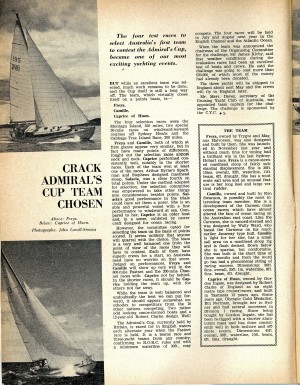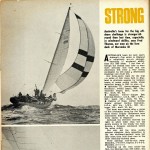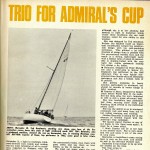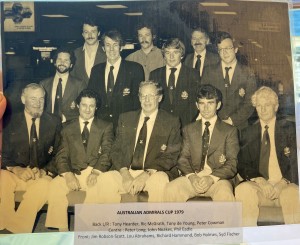| Admirals Cup | |
|---|---|
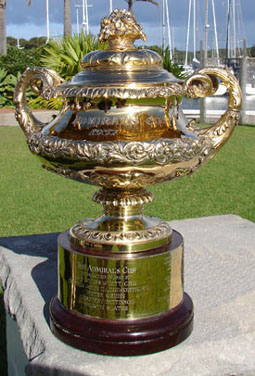 | |
| Country | England |
| Club | Royal Ocean Racing Club |
| Website | admiralscup.rorc.org/ |
Admirals Cup
The Admiral's Cup regatta, organised by the Royal Ocean Racing Club was held in Cowes. Starting in 1957, it was normally a biennial event, running every odd year. However in recent years, it has been held sporadically.
In the beginning, only one team from each nation was allowed to compete, but in 2003 the rules were changed allowing several teams per nation.
The 2003 event did not follow the normal format and allowed entries from any yacht club affiliated to a national authority, thus allowing the possibility of several teams per country. This was the last year the event was run and it was won by Australia - a team from the Royal Prince Alfred Yacht Club.
Australia's Challenges | The Admirals Cup MHYC: The First 60 Years Article by: Richard Hammond Published: 1999 That Wimbledon is to tennis, and the British Open to golf, the Admiral's Cup at Cowes is to yachting. It is the World Championship of ocean racing, held every two years, to coincide with the rugged Fastnet Race. To those who race their yachts offshore in blue water classics, the Admiral's Cup is equal in prestige to the Sydney to Hobart, or the Newport to Bermuda race down the east coast of the United States. But no other event matches the charisma of the Cup at Cowes, or the quality of the competition. Teams of three yachts contest a five-race series: on the Solent, on nearby Christchurch Bay, across the English Channel and back, and in the past, the Fastnet. It was first held in 1957. England won the first series, the United States the next two, and England took back the Cup in 1963. For Australia it all started in 1963 at the finish of the Hobart race in a tiny pub near Constitution Dock in Hobart. Three of our then leading yachtsmen decided they would organise a challenge for the Admiral's Cup, which was officially announced in June 1964. Trygve Halvorsen, Norman Rydge Jr. and Bill Psaltis were those credited with the idea of this first challenge. Selection trials were held with Ron Swanson and crew from Middle Harbour Yacht Club with Camille; Trygve and Magnus Halvorsen with Freya; and another then well-known MHYC yachtsman, Gordon Ingate with several club members crewing on Caprice of Huon. In the early sixties MHYC was duelling with the CYC for ocean-racing supremacy in Australia, so it was no wonder that a solid contingent of MHYC helmsmen and crew were members of the team. Middle Harbour had 11 crewing the three boats in an era when our club was very competitive and our crews were in great demand for ocean racing. Australia was not taken too seriously at first by the other competitors, but this changed as Caprice won three out of the four races, and Australia finished a creditable second. Caprice also won the prestigious Queen Victoria Cup. Our preparation was thorough, crews were better than their counterparts, helmsmen in the groove, and the navigators - Stan Darling, Bill Fesq and Peter Mounsey - outstanding. A blueprint had been laid for another challenge in 1967. I joined Ted Kaufman's Mercedes III in 1967, and she proved almost unbeatable, winning many club races before the Admiral's Cup trials. We were then joined by Caprice, now skippered by our club's Gordon Reynolds, and Balandra. Middle Harbour crew were spread amongst the three boats in 1967 to again show outstanding ability. We knew we would give the Cup a shake, and so we did. Nine countries competed, and Australia won by 107 points. We were accused of trying too hard, and in most races the three boats finished in the first five places, and with this consistency we won the Cup by a large margin. Mercedes III won Division B in the Fastnet and Channel races and placed first and third in the Solent, and like Caprice, won the prestigious Queen Victoria Cup to be best boat. (Mercedes III was later bought by the late Fred Clutton, a popular club owner, and raced from MHYC.) The Australian team was invited aboard the Royal Yacht Britannia to meet Princess Anne, Prince Charles and the Duke of Edinburgh and partake in conversation and cocktails. We were taken on board in royal barges, much to the envy of the onlookers on the shore. The knowledge gained about sailing in English Waters from 1965 and1967 was invaluable and we were confident that we could win again in 1969, and we nearly did. There were by now 11 countries competing. Up till then we were superior to the other competitors, but they had begun to watch us very closely and the gap started to close. Ragamufiin, Mercedes III and Koomooloo were the three yachts for 1969, and we were gaining points at a great rate. Going into the Fastnet and final race, we were ahead by 73 points. Very light weather at the tail end of the Fastnet was our downfall: we were beaten by the United States, to finish in second place. It became obvious that a well-tuned Australian yacht, sailed skilfully, could hold its own in English waters. Racing in English waters differs dramatically from racing in Australia. Factors to consider are fickle winds, fog, big rise and fall of tides, strong currents, short nights, cold unfavourable weather, large fleets, local knowledge, much shipping, calms, poorer visibility, kedging and shallower waters, and more good boats. The tide changes on the shore up to 2 hours before it does out in the Channel, and many back eddies are formed. Knowing how to use these variations to advantage is the difference between winning and losing. Cross-Channel tides have an effect on the wind speed and direction as they are near perpendicular to the direction of the boat. The Fastnet Race is easier to contend with, as the axis of the course is mainly in line with the tidal flow. The Solent is particularly tricky with headwinds, shallows and deep water channels which produce tidal flows up to 6 knots. Visualise running with spinnaker at 10 knots with 6 knots of favourable tide. It is particularly hard to judge with 16 knots of speed over the ground how quickly the rounding mark is coming up and when to start turning the boat to come on a wind, and with a bunch of other boats calling for buoy room. Knowing where to sail along a shore and timing your tacks with less than a foot under the keel also takes a lot of practice. And then there are the rounding marks themselves, normally crowded with ruthless skippers and crew: in light airs the scene is like a traditional sea battle! Even though we were faced with all these challenges, the most important aspect of preparation and application was not to lose sight of the basics of yacht racing, and not to get overawed by these possible diversions. In 1971 Australia was preparing another challenge with Ragamuffin, Salacia (styled on Ragamuffin), and Koomooloo, now owned by Norman Rydge Jr. Ragamuffin won the Fastnet Race, but unfortunately Koomooloo lost her rudder in that race and retired, and Australia came third overall. 1973 saw Australia sporting a very competitive team: three boats of approximately equal size and speed with top crews. Ragamufiin after her Fastnet win, Gingko and Apollo II, both Ben Lexcen 45-foot yachts. Our own Gordon Reynolds, who had retired from competitive ocean racing, was elected Team Manager. Just before the Admira1's Cup start, the three yachts sailed in the Cowes to Dinard race, which attracted 250 starters, and finished first, second and fifth, after struggling with fierce tides reaching 7 knots off the coast of France, with a tidal range of 29 feet. It was a great warm-up for the series ahead. The other 15 opposing countries knew we were there, and it was a close battle with Germany who took first place after a very lucky break for them in the Fastnet Race. Australia finished second. During the Irish Sea crossing in 1973 Gingko was enveloped in pea soup fog. We could only just see the bow from the helm, and it stayed like that all the way to the Fastnet Rock. Finding the rock was a difficult job and took an unbelievable amount of work. Today with one push of a button you know where you are, to within a boat length. 1975 and 1977 were two bad years, but 1979 saw a fresh, keen bunch of good sailors who got on with the job. The weather was foul for the Solent and Fastnet races after a light weather Channel race. There had been few mishaps until this race, but it was to meet the most disastrous storm in yachting history to that time. It caused the loss of 15 lives and great damage. 136 crew had to be rescued by helicopter or ship. Of the 303 yachts that set out, only 85 completed the course. Of the others, 194 retired and 24 were knocked down to horizontal at least once; about 20 rolled through 360 degrees. Despite all this, the strong winds suited Ragamuffin, Impetuous and Police Car and the final tally of points saw Australia win the Admiral's Cup for the second time, from 18 countries, by 85 points. In 1981 Apollo V, Hitchhiker and Ragamuffin turned in a good performance against 16 teams to record an equal second placing against a strong English team. (Apollo V was the experimental yacht used to test ideas for Alan Bond's 1983 America's Cup yacht, Australia II.) From 1983 onwards there were a number of successes for Australia, culminating in 1993 when Australia missed out on a Win by a quarter of a point! In 1997 we were placed a creditable fourth. |
1964 | Power Boat and Yachting Dec 1964 Freya, Camille and Caprice of Huon |
1965 | In 1965m The Cup stays in Britain. Australia was second. Australia's First TeamThe 1965 first Australian Admiral's Cup Team - among which were 11 MHYC members. The team of 36' Camille, 39' Freya and 45 ' Caprice of Huon came second. MHYC's Camille was thee top scoring yacht, MHYC club members included Frank Likely, Ron Swanson, Peter Mounsey, Leo Reilly, Curly Curlewis, Dave Linton, Peter Green, Freddy McClure, Graham Newland, Colin Betts and Gordon Reynolds. Photo courtesy of John Hearder 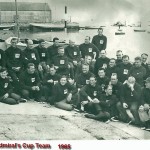 First Admirals Cup Team 1965 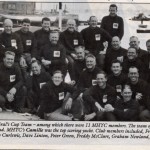 First Admirals Cup Team 1965 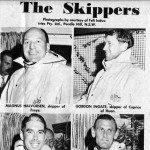 First Australian Admirals Cup - TheSkippers 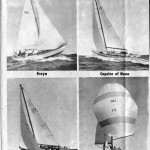 First Australian Admirals Cup - The Craft 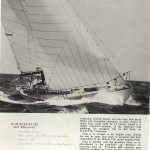 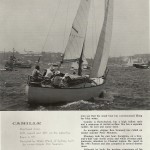 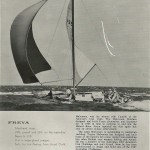 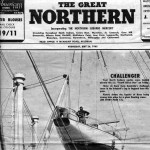 Caprice of Huon - article in the The Great Northern 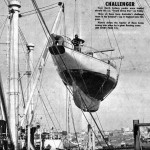 Caprice of Huon - article in the The Great Northern 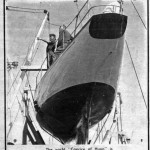 Caprice of Huon - article in the The Great Northern 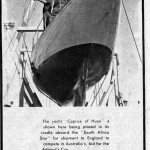 Caprice of Huon - article in the The Great Northern 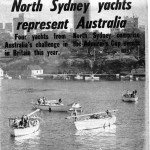 North Sydney yacht represent Australia 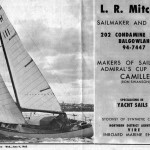 L. R. Mitchell Sailmaker and rigger 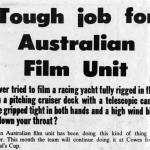 Tough Job for Australian Film Unit 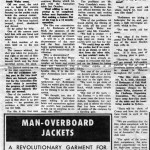 Tough Job for Australian Film Unit 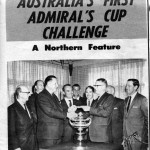 Australia's First Admiral's Cup Challenge 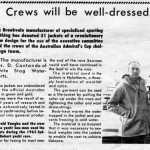 Crews will be well-dressed 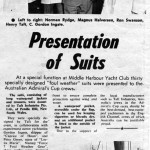 Presentation of Suits 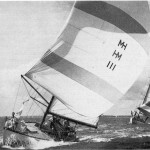 MH111 Camile leads in a group of yachts in the 1965 Admiral's Cup |
1967 |
1979 | Admirals Cup team 1979Back L to Right: Tony Hearder, Ric McGrath, Tony de Young, Peter Cowman Middle: Peter Long, John Noakes, Phil Eadie Front: Jim Robson-Scott, Lou Abrahams, Richard Hammond, Bob Holmes, Syd Fisher |



